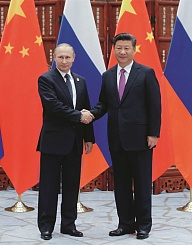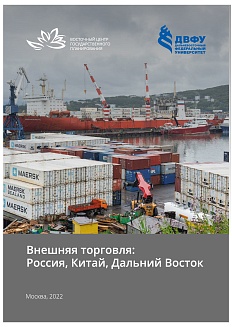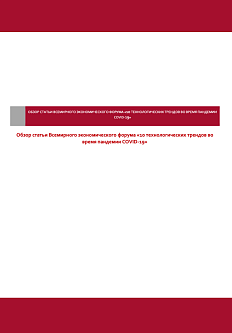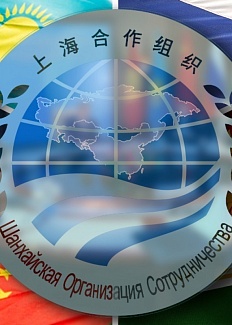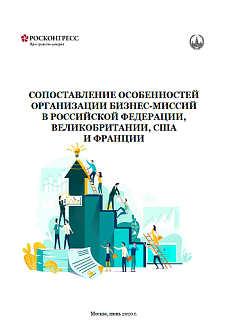«The idea of a future that would be distinct from the present is so inaccessible to our traditional way of thinking and acting that we, or at least the majority of us, categorically resist any opportunity to implement it.»
John Maynard Keynes, English economist and one of the founders of macroeconomics
Transforming the world at a global level
Until 8 November 2016, protectionism was considered an indisputable world evil. Within the Western values system, it ranked worse than political dictatorship and totalitarianism (Chile, Saudi Arabia). Economic nationalism was recognized as the major obstacle on the path to global market growth.
But Donald Trumps victory in the presidential elections on an anti-globalist platform of restoring Americas industrial greatness broke the system. Our clear and comprehensible world crumbled, and black became white.
We unexpectedly discovered that economic protectionism would become the content and driving force of American foreign policy. It became clear that it is not only developing and developed countries (East and West) that view the future differently. The West itself is now beset with disagreements. As British Prime Minister Theresa May announced in the immediate aftermath of the Brexit referendum, London will in the future be making all decisions based on its own national interests, without taking into consideration what is amenable to Europe as a whole.
These protectionist manoeuvres on the part of the USA and the UK will only have come as a surprise to the casual observer, however. The first signs of a global shift in the trajectory of world economic development were visible as far back as 2000.

The share of global GDP held by the worlds 16 leading economies (the G7 countries, Australia, Denmark, Austria, Belgium, the Netherlands, Norway, Finland, Sweden, and Switzerland) had gradually been falling before the millennium, but then virtually collapsed. In the 30 years leading up to 2000, their collective share dropped from 76% to 71%, whereas in the 13 years since it has plummeted to 53%. Global economic growth in the 21st century has been driven exclusively by trends in developing markets.
The transfer of wealth from West to East
This phenomenon has been termed the transfer of wealth from West to East. Experts identify two factors facilitating this transfer.
The first comprises demographics and a cheap workforce, which created the Asian industrial boom, growth in the prosperity of the population, and increased levels of consumption. In 1980, the share of the global population represented by the countries of Europe, the USA, Japan, Australia, and New Zealand stood at 24%, compared with 18% in 2009. By 2025, it is predicted that this share will fall to 16% (based on calculations which do not take into account Chinas decision to allow families to have a second child). With respect to domestic consumption levels, in 2010 developing markets outstripped the USA for the first time in modern history, and this gap is set to keep growing.
The second factor is a sharp increase in the cost of raw materials (primarily hydrocarbons), which is facilitating the rise of resource-rich countries (including Russia and Iran). Over the 100-year period preceding this increase, which also began in 2000, raw materials prices had been falling by an average of 0.7% annually. In 1999, oil prices stood at USD 1415 per barrel, compared with USD 135 in 2008. This growth was facilitated by the transfer of labourintensive and harmful production from developed countries to Southeast Asia (primarily to China), which assumed the main costs involved in the rising prices. Today, developed countries spend 810% of their GDP on energy, versus 2025% in developing countries.
Both factors (deflationary development and the resource boost) have been analysed in detail. Far less attention has been devoted to the third, no less significant factor in the growth of developing economies: the consolidated political management which has permitted countries in the Asia-Pacific region to concentrate their efforts on narrow breakthrough areas regardless of short-term market conditions and achieve rapid results in a highly mobilized way.
It isnt the depth of this economic transformation that is astonishing, however, so much as the speed at which it has taken place. It took Great Britain 155 years to double its per capita GDP with an initial population of 9 million people. The USA and Germany, each of which began with populations numbering in the several tens of millions, took between 30 to 60 years to do the same. India and China, each with populations of around 1.3 billion doubled their per capita GDP in just 15 years.
Political consolidation has been the key competitive advantage for developing countries in the battle for economic leadership. This isnt just a matter of rapid growth in the influence of state corporations, through whose mutual penetration China, Russia, and India have linked their programmes for security, economic development, and access to energy resources. This is about the ability to change the structure of global savings and investments in a centralized way.
Drang nach Westen
Between 2000 and 2008, the investment landscape of the global economy underwent cardinal changes. The level of investment by national state funds in developing economies outstripped the resources allocated by the IMF and the World Bank combined. The total amount of wealth accumulated in sovereign funds reached USD 3 trillion. If it hadnt been for the crisis, the volume of state funds would today exceed global currency reserves, at USD 1215 trillion (around 20% of global capital).
Prior to the crisis, China, which in the space of 20 years had become the factory of the world, had established colossal gold and foreign exchange reserves totalling USD 3.8 trillion (at a time when the US Federal Reserve System held USD 12 billion in reserves). In autumn 2007, China created the China Investment Corporation (CIC) to manage the countrys currency reserves and diversify investments while gradually reducing its dollar assets, with an initial share capital of USD 200 billion.
The CIC was issued with three key objectives. The first of these was to expand the share capital of transnational corporations with the goal of acquiring new technologies and taking over global brands. The second was to launch Chinese brands on the global market. The third was to get involved in strategic oil and gas projects.
In political terms, these constituted just one objective to liberate the Chinese economy from its dependence on exports. At that point, the deflationary effect of low wages was already exhausted. China had begun to lag behind its neighbours (Vietnam, Indonesia, Taiwan, and Malaysia) in terms of foreign investment growth rates.
Immediately prior to 2008, the situation in the global supply chain was such that, if nothing changed, the AsiaPacific economy would very quickly exceed the potential of the united West. According to PricewaterhouseCoopers, the top ten global economies in 2050 would have been as follows: 1) China, 2) India, 3) the USA, 4) Indonesia, 5) Brazil, 6) Mexico, 7) Japan, 8) Russia, 9) Nigeria, 10) Germany.
At the time of the crisis, US internal markets were directly dependent on Chinese investment. Pre-millennium, the majority of Chinese investment (59%) went to developed countries (primarily the USA and Canada), whereas postmillennium, priorities shifted towards Africa and Latin America.
The present level of Chinese investment in the USA is now at the same level as Chinas investment in the Virgin Islands. Through offshore companies, China invests in economies throughout the world, which may have been one of the reasons for cleaning up offshore markets on the pretext of fighting corruption.
An intentional imbalance
Modelling carried out by the World Bank has shown that, if it retains open access to the financial market, China will contribute more than 30% of global economic growth by 2025. The contributions of China and India to global growth are two times greater than those of the USA and EU. The threat of losing not only the initiative, but also operative control over the global economy forced the USA to remind market participants who holds the key to shared financial institutions.
A programme of quantitative easing was launched, and, with a single move, the US Federal Reserve System devalued the reserves accumulated by developing countries. According to balance data provided by the Federal Reserve, around USD 4 trillion was printed over the course of five years. And according to the Government Accountability Office, off-balance sheet issues guaranteed by commercial banks, including foreign ones, now exceed USD 15 trillion.
In essence, the reserves of developing countries have been confiscated, and nontariff practices for limiting investment have been expanded (through sanctions and campaigns to restrict offshore activities). Global savings have been transitioned into the US jurisdiction. In 2014, following the completion of quantitative easing programmes, Chinese reserves stood at the pre-crisis level of USD 3.8 trillion, whilst US federal reserves had increased from USD 12 billion to USD 2 trillion, with an overall balance of USD 3.7 trillion.
As time passes, it is becoming possible to say that the 2008 financial crisis was the consequence of structural changes to the economy, rather than their cause. The global market was consciously and deliberately unbalanced, the West refusing to finance the alternative political strategies of the East. The failure immediately prior to the crisis of the Doha Round of WTO negotiations, during which the USA attempted to force the denationalization of Chinese, Indian, and Brazilian capital markets, heralded the end of a unipolar world.
Today, the West is stuffed with new money, which it is unable to transform into development programmes. This money is inflating domestic capitalization and blocking an independent Western industrial project, while investment in manufacturing and resource-rich countries (Asia-Pacific, the Middle East, and Russia) which could serve as a driver of global growth is obstructed.
In the five years following the crisis, Americas Dow Jones more than doubled in size, Japans Nikkei grew by a factor of 2.5, and Germanys DAX tripled. Only Chinas stock market failed to grow, maintaining zero returns alongside a GDP growth rate of over 7%. During the same period, Russias stock market has shrunk threefold, even though oil prices have soared and GDP growth rates have exceeded the global average.
At one time, the unified project for financial globalization was in alignment. The old global economic model is now in need of change, and the new America has been kept from the public amid talk of national priorities. Trumps victory has shown that the project for big democratization is at an end, and postelection bacchanalia in the USA and disarray in Europe have revealed the full horror of the united Wests political class when faced with the threat of the world being rearranged according to new (unknown and incomprehensible) conditions.
A perfect match
On 17 June 2016 (nearly six months before Trumps victory), Vladimir Putin, in his address to the St. Petersburg International Economic Forum (SPIEF), announced the creation of a broad integrative approach involving the Eurasian Economic Union (EAEU), the Shanghai Cooperation Organisation (SCO), and the countries of the CIS.
A week later in Tashkent, the leaders of the countries taking part in the SCO summit announced the accession to the organization of India and Pakistan by the end of the year, as well as their unanimous support for Chinas Belt and Road initiative. Two days later, Vladimir Putin commenced a large-scale visit to China.
During this visit, Moscow and Beijing set out their priorities: to establish a just and rational world order (a global agenda), to strengthen security and strategic cooperation (in the military and technology spheres), and to create a unified transport system and hydrocarbons market (spatial unification via infrastructure). More than 30 major contracts were signed, covering scientific and technological developments and transport and energy projects.
In China, the Russian Presidents visit was described as a turning point, which indicated a mutual departure from a policy of non-alignment. In an interview with news agency Xinhua on the outcomes of his visit, Putin said that describing RussianChinese relations as strategic cooperation no longer went far enough, and that a comprehensive partnership was now the appropriate term.
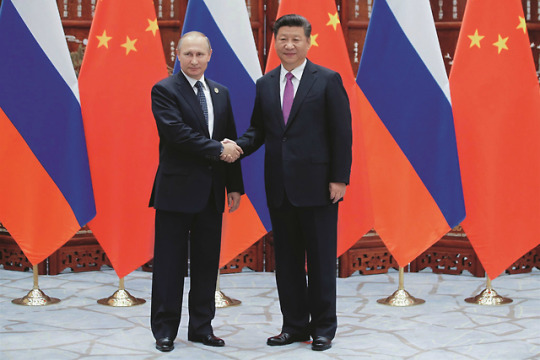
A union between the factory of the world and the resource base of the world based on intergovernmental cooperation lays the foundation for a new global project on the one hand and, on the other, returns the world to its former (Westphalian) format of mutual relations.
The most important thing for Russia is to understand this mechanism thoroughly and to make it a system in which it can realize its own interests without becoming a raw materials appendage once more. This time, to Asia
Unlike the financial market (or Western project), which is based only on the circulation of paper, production assembly (the Eastern project) requires the physical availability of people, technology, warehouses, workshops, logistics, and raw materials. What is called the national dimension of the economy, in contrast to the global dimension (digital or virtual), is burdened with social programmes and obligations that do not always coincide with market motivations.
At the heart of todays political crisis and trade wars is a clash of interests between those who control capital assets and those who possess claims to them. The ideologies and principles behind the financial and industrial approaches to creating a new value chain are diametrically opposed.
The incompatibility of the Western and Eastern approaches to the future must be carefully noted. Some see the future in terms of intergovernmental relations (the Peace of Westphalia and Yalta Agreement), whereby the fulfilment of obligations is guaranteed by a broad web of supranational agreements. Others seek to remove the constitutive role of the state (the new Washington Consensus).
What is important to understand is that competition between countries has never ceased. Initial attempts to conceal national strategies behind the commercial interests of private companies were mistaken. The attempt to deceive competitors also laid the foundations for the crisis of trust which has led to the division of globalization into two independent projects.
The political divorce will be followed by the separation of industrial projects from the financial risk management system. This isnt just about two versions of the market. It is about the creation of new socioeconomic formats, which is why politics is moving to occupy a leading position in relation to economics. We need to know now who will be answering tomorrow (in 2030 years time) for the obligations that we accept today.
A window into Asia
What is special about the era that the world is now entering smoothly? Primarily, this is a new era of regionalization, and of the rearrangement of financial institutions, not by themselves, but in conjunction with social and industrial policy.
The Asia-Pacific region is one of the worlds most backward regions when it comes to levels of internal integration. As the McKinsey Global Institute (MGI) notes, no one country in the world enjoys the simultaneous presence of all factors required to resume growth. There are several reasons for the lack of unity in the Asia-Pacific region, but two are key.
The first is due to the external dimension of problems arising from the historical attitude of the West to domination, which refers to its refusal to admit the emergence of alternative centres of power. This was manifested in the conquest of India and the opium wars in China. It has been pursued in the presentation of artificial contradictions and t he creation of additional confrontation zones (for example North and South Korea, as well as Taiwan and China).
The second originates from ongoing internal problems. These include the multitude of mutual territorial claims in the South China Sea (the regions key communication channel). Another is the historical rivalry between India and China, and the latters lack of a direct outlet to the Indian Ocean. Finally, there is the banal fear of Chinese power among the other Asia-Pacific countries, which is dictating the search for an external arbitrator especially in issues of security.
The creation of the SCO is removing the majority of the integration problems in the Asia-Pacific region.
Firstly, Russia is becoming a secondary centre of regional power, which is alleviating fears of possible Chinese expansion. Secondly, Russia and its energy resources are providing a solution to one of the regions most systemic problems by making it less dependent on hydrocarbon supplies from the Persian Gulf (according to the Asian Development Bank, by 2050 the region will be 90% dependent on oil imports). Thirdly, Russia is a country in which the interests of such diverse nations as China, Japan, South Korea, India, and Vietnam are at play.
The SCO represents a historic opportunity for the Asia-Pacific region. The era of Asian development under the aegis of the industrial offshoring of the Western economy is coming to an end. Following the 2008 crisis and quantitative easing programmes, it has become clear that sovereign development on the basis of a foreign institutional environment is impossible.
Between 2008 and 2017, the bond market for Chinese non-financial companies grew from USD 69 billion to USD 2 trillion. Beijing is now transitioning its economy to a domestic investment mechanism. The share of foreign capital in all investment in China was 2% last year (compared with 28.6% in 1996), versus 60% of Chinas own funds. Almost 80% of credit is provided by state banks and in the state sector. The share of foreign participation in Chinas industrial production is steadily falling (from its 2003 peak of 35.9%). At the same time, the share of joint ventures with 100% foreign participation is rising (at more than 80% of all joint ventures). These last figures may appear paradoxical: foreign participation in production is falling, whilst the number of entirely foreign joint ventures is rising. In fact, it is completely logical. China takes Chinese money from joint ventures and creates 100% Chinese companies, which compete with the joint ventures on quality and price of goods on the foreign market, thus lowering the profits of the foreign companies from Chinese exports.
China is not simply transitioning to an internal investment growth mechanism, however; it also wants to make its domestic market a source of growth for the entire region. This will require diversification of the AsiaPacific economy and its development to full cycle (resources, production, and consumption).
The production pyramid will be topped off not by a trade or investment regime, but by agreement between all participants in the process of creating a development model (or lifestyle).
Without Russia, this new model for Asia-Pacific development will not be possible. A mechanism has now been launched that carries enormous momentum. To stop it will be very difficult. The most important thing for Russia is to understand this mechanism thoroughly and to make it a system in which it can realize its own interests without becoming a raw materials appendage once more. This time, to Asia.
Text: Leonid KRUTAKOV
Source: EEF 2018 Official Magazine


